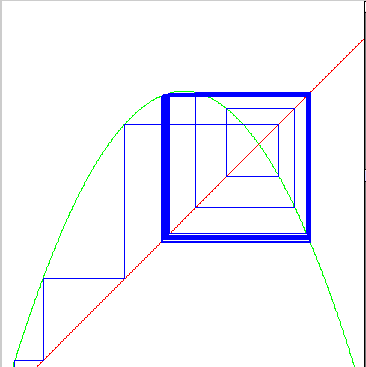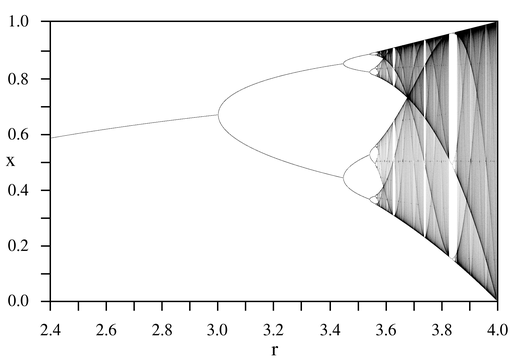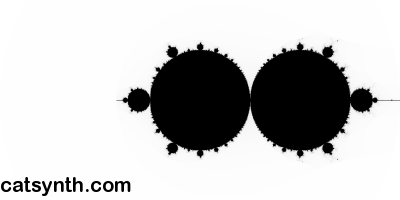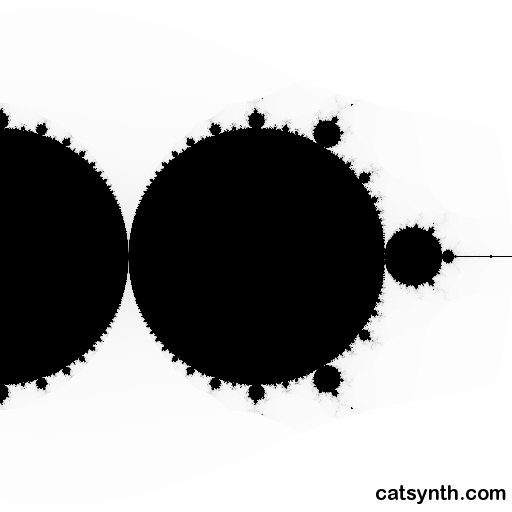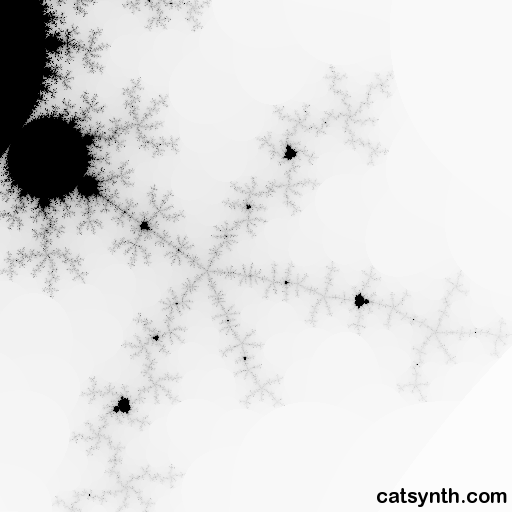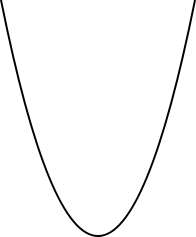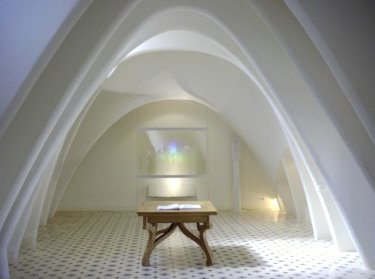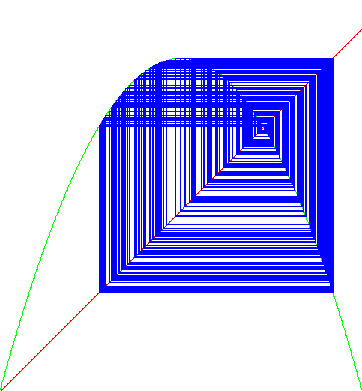Today we revisit one of our most popular articles, on the logistic function:
f(x) = ax(x-1)
In the original article, we demonstrated how we can use this function as a “logistic map” by iterating (i.e.,applying it repeatedly to the previous result). The logistic map produced different sorts of behavior depending on the values of a. For example, for some values of a, iteration settles into a cycle, bouncing among two or more points on the function.
The original article provided more examples and more detail about the mathematics, and those who are interested are encouraged to go back and check it out. One of the main this we discussed was how one can characterize the logistic function over
different values of a using a graph called a bifurcation
diagram. As the values of a increase (a is labelled as “r” in this graphic I shamelessly but legally ripped off from wikipedia), one can observe vertically the period doubling where the logistic map converges on a single value, then bounces between two points, then four, then eight, and so on, until the onset of chaos at approximately 3.57.
When a is greater than or equal to 4, the function “diverges”, i.e., it just gets bigger and bigger (or smaller and smaller because the numbers are negative) when you repeatedly apply it.
The bifurcation diagram shows what happens for real values of a, i.e., all integers, fractions and other numbers that can be expressed as a decimal. But suppose we allow a to be any complex number, or any combination of real and “imaginary” numbers (i.e., square roots of negative numbers). Real numbers can be expressed a line, while complex numbers are expressed on a plane. So we can produce an analog of the bifurcation diagram over a plane instead of a line as above.
In the following diagrams, we are looking at the complex plane of
different values for a. If the logistic map converges to either a single value or a cycle, the location on the plane is colored in black. If it diverges, i.e., gets infinitely farther away from zero, then the location is white. Unlike for real numbers, where the convergent “black” values of a form a simple line segment, for complex numbers the set of convergent values is a lot more “complex”:
Zooming in, we can see the structure of the set, with lots of smaller “bubbles” and “filaments” off of the main circles. The large circles are the complex-number equivalents of the single-line sections of the bifurcation diagrams, with the small bubbles representing cycles and period doubling.
Some readers might recognize similarities between this set and more well-known Mandelbrot set:

The similarity is more than coincidence, as the Mandelbrot set is based on a map similar to the logistic map. But the Mandelbrot set has the pronounced cardioid shape and asymmetry different from the logistic-map set. Zooming in further, we see that filaments and local areas of the two sets have more similarity. Indeed, we see small “Mandelbrot-like sets” at the junctions of the filaments:
It is interesting how these miniature versions have a shape similar to Mandelbrot set rather than the double-circle of the logistic-map set.
Although these sets have a “fractal-like” qualities, neither is a fractal in the strict sense of the word. They are not strictly self-similar, nor do they have fractional dimension. Nonetheless, we are featuring the logistic-map set as a “Friday Fractal” , an event started by our friend Andrée at meeyauw.
I am not sure the logistic-map set has a name like the Mandelbrot set has, so how about calling it the CatSynth set?
Submitted to Carnival of Mathematics #29.
mathematics
fractal
logistic function
logistic map
bifurcation
Mandelbrot set
Friday Fractal

